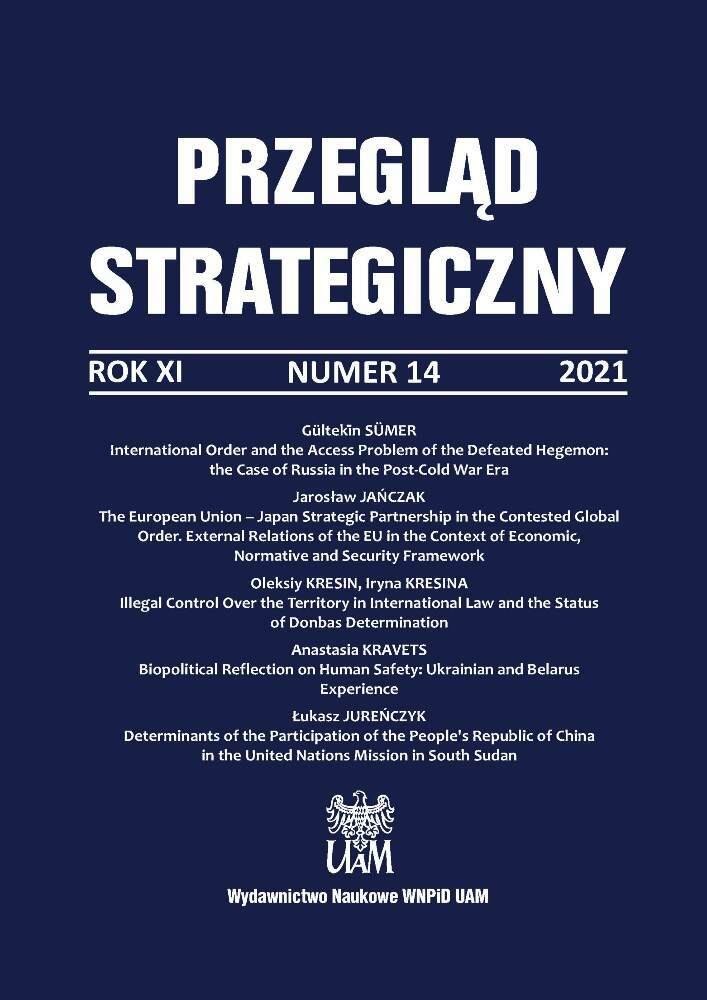Abstract
Throughout the history, the formation of the constitutional state has been the first experience of the modern state in Iran. The change in power relations and the restriction of authoritarian power were among the most important issues of constitutional state. The current study aims at investigating the reasons for transition from Constitutional state to an authoritarian bureaucratic state by adopting Laclau and Mouffe’s framework to political discourse analysis. Research methodology is descriptive-analytical conducted by library–based data. The results showed that the constitutional revolution transformed the power structure and traditional state, but the constitutional revolution failed to create a new order. Despite legal provisions such as the formation of the parliamentary system and the constitution, the constitutional state was unable to exercise its legal power. The co-existence of traditional and reactionary components such as the Khānins, tribal leaders, tribal populations and owners in line with modern elements, intellectuals and the heterogeneity of the ruling political elites made the constitutional revolution incapable of producing profound politico-social changes. As a result, a number of internal and external factors such as financial crisis, tribal power, the imperialist treaty of 1907,disillusionment of political elites, the formation of centrifugal forces, insecurity and global chaos and development of neighboring countries, diversity of ideological in line with geopolitical points of view have been the most important factors in the transition to the authoritarian bureaucratic state of Pahlavi and the failure of the nation – building process and the collapse of politico-constitutional system in Iran.
References
Adamiyat F. (2008), The Ideology of Iran’s Constitutional Movement, Vol. 1, Gostareh.
Ahmadi H. (2011), Ethnicity and ethnocentrism in Iran, Ney.
Andersen N. A. (2003), Discourse Analytical Strategies: Foucault, Koselleck, Laclau, Luhmann, Policy Press.
Bahār M. (1984), A Brief History of Political Parties of Iran, 1st edition, Vol. 1, Amirkabir.
Behnām J. (2000), Iranian Intellectuals in Berlin, 1st edition, Forouzān.
Browne E. G. (1918), The Persian Constitutional movement, British Academy.
Chouliaraki L., Fairclough N. (1999), Discourse in Late Modernity: Rethinking Critical Discourse Analysis, Edinburgh University Press.
Clarke C. Brown A., Hailey V. (2009), Working Identities? Antagonistic Discursive Resources and Managerial Identity, “Human relations”, 62 (3): 323–352.
Cottom R. (1992), Nationalism in Iran, Translated into Persian by: Ahmad Taddayon, Kavir.
Cronin S., Cronin D., Cronin S. M. (1997), The Army and Creation of the Pahlavi State in Iran, 1921–26, IB Tauris.
Fiyouzat E. (1996), State in Pahlavi Period, 1st edition, Chapakhsh.
Gellner E. (1983), Nations and Nationalism, Basil Blackwell.
Ghani C., Ghanī S. (2000), Iran and the Rise of Rezā Shāh: From Qājār Collapse to Pahlavi Power, IB Tauris.
Gramsci A., Hoare Q. (1971), Selections from the Prison Notebooks, Lawrence and Wishart.
Hāeri A. (2001), Shi’ism and Constitution in Iran and the Role of Iranians in Iraq, Amirkabir.
Hāfez Nia M. (2002), Geopolitics of Iran, SAMT.
Howarth D., Stavrakakis Y. (2000), Introducing Discourse Theory and Political Analysis, in: Discourse theory and political analysis: identities, hegemonies and social change, (eds.) D. Howarth, A. Norval, Y. Stavrakakis, Manchester University Press, Manchester–New York: 1–24.
Husseini S. (1994), Some Unknown Hints on Iran’s Contemporary History, 1st edition, Navid-e-No, Shirāz.
Husseini Zādeh M. A. (2007), Political Islam in Iran, Mofid University Press.
Karimi Pour Y. (1992), Geo-politic Analysis of Critical Areas in Sistan and Baluchestan. Doctoral dissertation, Tarbiat Modares University.
Karimi Pour Y. (2000), Iran and Neighbors, University Press.
Kasraei M. (2000), The Challenge of Tradition and Modernity, 1st edition, Markaz.
Kasraei M. S., Pouzesh Shirazi A. (2009), Laclau and Mouffe’s Discourse Theory as an Effective Tool for Understanding and Explaining Political Phenomenon, “Journal of Politics”: 339–360.
Kāveh Magazine (1960): 1.
Laclau E., Mouffe C. (1985), Hegemony and Socialist Strategy: Towards a Radical Democratic Politics, Verso.
Maki H. (2001), Twenty Years of Iran’s History, 6th edition, Vol. 3–4, Elmi.
Mirheidar D. (2011), Five Decades of Developments in Thought and Geo-political Issue, Papli.
Mouffe C. (2008), Critique as counter-hegemonic intervention. Transversal multilingual web journal, http://eipcp.net/transversal/0808/mouffe/en/print (20 Jan 2013).
Nāzem H. (1954), Russia and Great Britain in Iran (1900–1914), Columbia University.
Rahbari M. (2009), Constitutional Revolution: Religious renaissance in Iran, “Research in Political Science”, No. 1: 105–134.
Rasoulzādeh M. A. (1998), Reports from Iranian Constitutional Revolution, Translated into Persian by: Rahim Raeis Nia, 1st edition, Shirāzeh.
Rowshanfekr M. (2018), Modernity and Tribal Society of Boyer-Ahmad in Pahlavi Period, 1st edition, Movarekhān.
Sha’bāni R. (2006), Social History of Iran: the Basics, Qomes.
Tabari E. (1978), Iranian Society in Rezā Shāh’s Period, Ferdows.
Tājik M. (2008), The Analysis of the Ninth Period of Iran Presidential Election, “Journal of Humanities”, No. 61: 75–95.
Torfing J. (1999), New Theories of Discourse, Laclau, Mouffe and Źiźek, Blackwell.
Zibākalām S. (1998), Tradition and Modernity, Rowzaneh.

